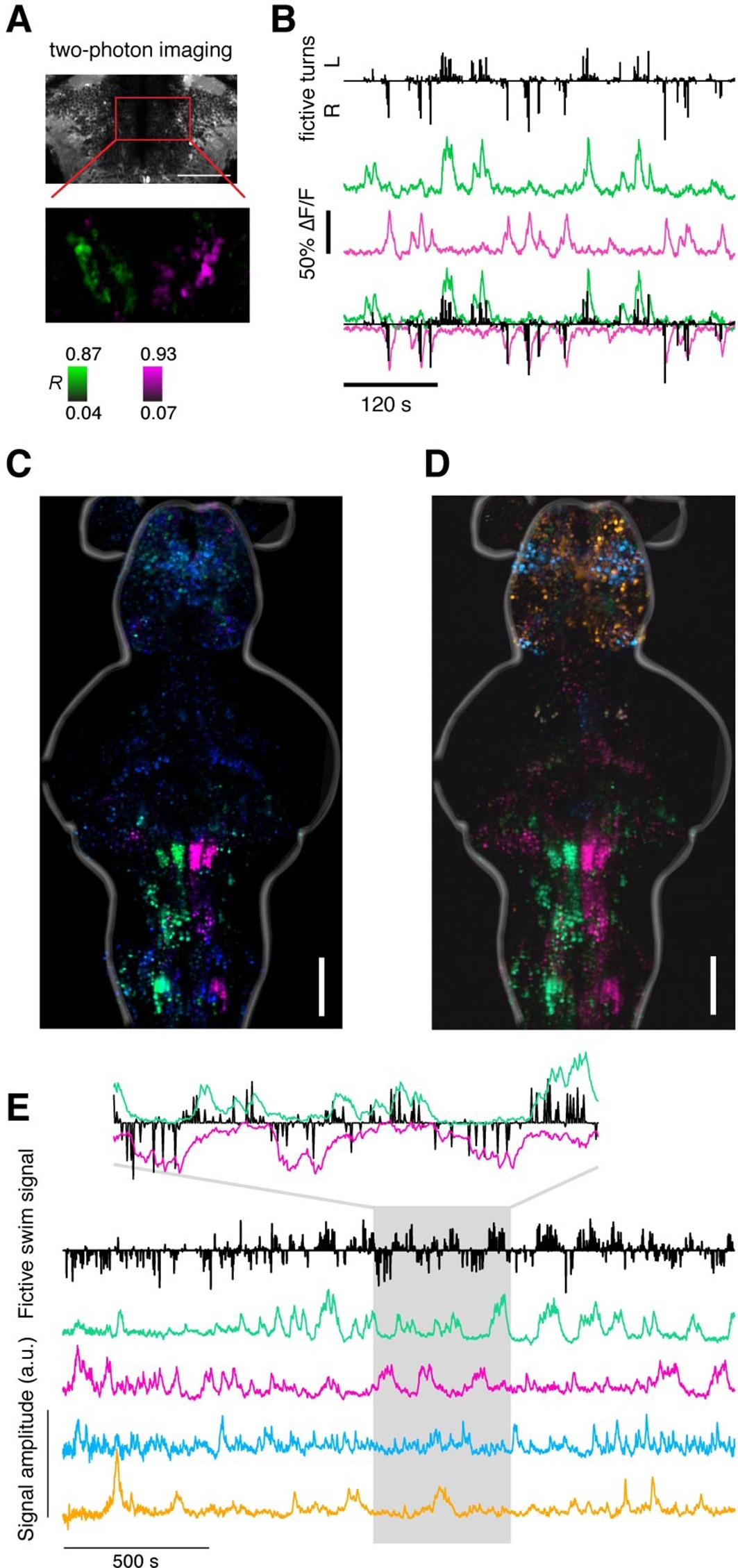Fig. 2 S2
Recovering the ARTR using supervised and unsupervised methods.
(A) Two-photon imaging during fictive behavior recovers the ARTR in one plane by correlating every pixel to a seed voxel. This antiphasic correlation pattern was observed in all fish imaged, including fish used for neurite tracing and neurotransmitter analysis, N = 69 total. (B) Fictive turns (black bars) and neural activity (average over magenta and green populations) shows the correlation between two-photon ARTR signal and turning behavior. (C) Map derived from regression analysis relating behavioral parameters (turn direction and amplitude) to neuronal responses (see Figure 2 and ′Materials and methods′), conventions as in Figure 2. (D) Maximum projection maps derived from Independent Component Analysis (ICA), performed as described in Freeman et al. (2014). Analysis was applied to voxel-wise time series data using 100 principal components and 20 independent components. Spatial maps for 4 out of 20 components shown here, combined into a composite color image by scaling amplitude to a (black, red/green/cyan/magenta) color range, separately for each of the 4 components, and then computing a maximum over the vertical dimension. Location of the ARTR is consistent with that from Freeman et al. (2014) and Ahrens et al. (2013). One representative fish is shown, but the ICA analysis was able to recover the ARTR consistently in 5 fish tested. (E) Temporal components for the same ICA analysis shown in panel (D). Fictive swim signal as defined in Figure 2. The four colored traces correspond to the four spatial maps in panel (D). Inset highlights components (magenta and green) that recover a region including the ARTR; one signal inverted to emphasize correspondence with behavior.

